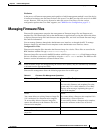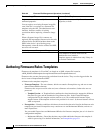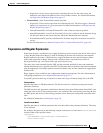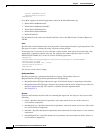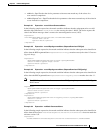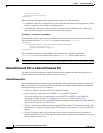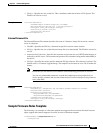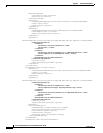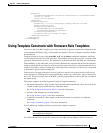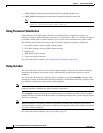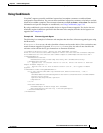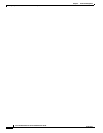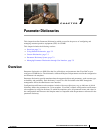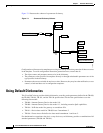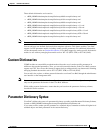
6-13
Cisco Broadband Access Center 3.8 Administrator Guide
OL-27172-01
Chapter 6 Firmware Management
Using Template Constructs with Firmware Rule Templates
<Expression>
<InformParameterName>Device.DeviceInfo.SoftwareVersion</InformParameterName>
<Value>5.4.1</Value>
<Operator>match</Operator>
</Expression>
<ExternalFirmwareFile>
<FileURL>http://10.10.10.10:889/sample-firmware-image.bin</FileURL>
<FileSize>3449</FileSize>
<AuthenticationCredentials>
<HttpUserName>test</HttpUserName>
<HttpPassword>changeme</HttpPassword>
</AuthenticationCredentials>
<FileType>X CISCO_COM DLCImage</FileType>
</ExternalFirmwareFile>
</FirmwareRule>
</FirmwareTemplate>
Using Template Constructs with Firmware Rule Templates
You can use the Cisco BAC template-processing mechanism to generate customized configurations for
a large numbers of CPE by using a small number of templates. The use of template constructs enables
this mechanism.
Template constructs are any of the tc:include, tc:if, and tc:choose conditional statements, which are
used in conjunction with Cisco BAC properties. The template processor processes the constructs when
generating instructions for a device. The instructions are then forwarded to the DPE and cached there.
FirmwareRules, on the other hand, are tags within a firmware rule template and describe the firmware
image to send to the device. Firmware rules may include expressions that are evaluated when the device
contacts Cisco BAC to retrieve configuration. If the expressions evaluate to true, the device is instructed
to download a specific firmware image file.
Firmware rules can apply firmware to devices based on a match of any preprovisioned or discovered
device parameters, including device group membership, model, type, current state, type of connectivity,
and so on. This processing is done at the RDU, with the preprovisioned or discovered data available at
the central server.
This release supports the following general classes of template constructs:
• Parameter substitutions—Rule content can be inserted based on parameter values stored on device
records or other objects within the Cisco BAC data model.
See Using Parameter Substitution, page 6-14 for more information.
• Includes—One template may include another.
See Using Includes, page 6-14 for more information.
• Conditional expressions—Rule content can be inserted based on evaluation of conditional
statements.
See Using Conditionals, page 6-15 for more information.
You use XML tags with the prefix tc to specify these template constructs.
Note Elements prefixed by tc are generic constructs that are the same for firmware rule templates
and configuration templates.
Cisco BAC firmware rules constructs are based on the XML schema defined in the file located at:



